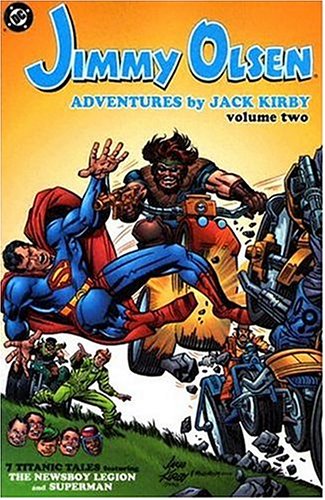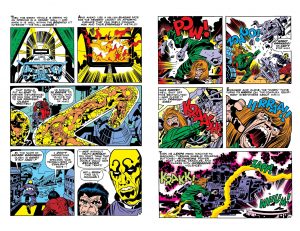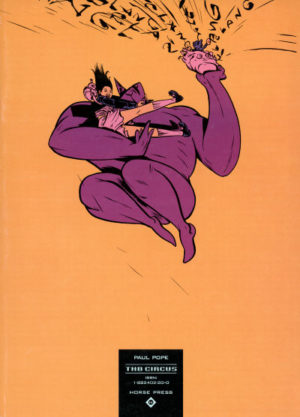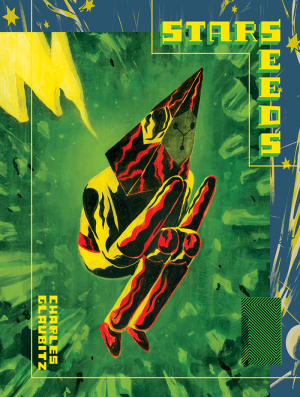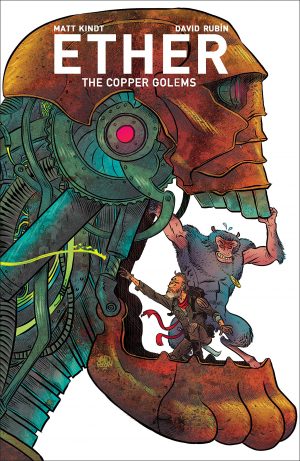Review by Frank Plowright
Jack Kirby’s first 1970s work for DC was on Superman’s Pal Jimmy Olsen, a series that by 1971 was losing its audience by continuing with the juvenilia of Jimmy constantly adopting ludicrous disguises for newspaper scoops, and frequently needing Superman to rescue him. Kirby immediately dispensed with that, Jimmy now introducing Superman to events, the first collection of his Jimmy Olsen stories steering a wild course and highlighting Kirby’s interest in a wide range of contemporary topics. It’s a course continued during the remainder of his time on Jimmy Olsen.
Before or since, no-one producing comics has ever matched Kirby’s conceptual mind. An incredible energy persists after all these years as Kirby leaps from one astounding concept to another, from an updated form of vampire to an entire world in the sewers the size of small car, from the Loch Ness monster to DNA experiments, then almost science fiction. He even manages a nod to the old Jimmy Olsen with a caveman variant seen in the sample art. Tenuously connecting Jimmy and the Newsboy Legion to their newspaper job is a background plot of global crime organisation Intergang, Daily Planet proprietor Morgan Edge revealed as a member.
These stories are very much an ensemble cast. Jimmy is always accompanied by the Newsboy Legion, and sometimes by Superman also, and when Superman’s not in their company Kirby continues to show us what he’s investigating. As ever, conceptually Kirby is so far ahead of his contemporaries. A secret lab manufacturing threats is eventually located shrunken beneath a rock, Superman visits New Genesis, where he’s almost mundane, and the vehicles look amazing all the way through.
For all the energy, frenetic pace and ideas, not everything gels as intended, which was the case at the time. For Kirby dialogue was rarely conversation, merely a means of explanation or moving the plot forward, so consequently it’s functional at best and woeful at worst. Some of the more whimsical inclusions have the feel of a middle-aged man not quite getting to grips with youth, and while Kirby managed this better than most other DC writers in the early 1970s, it’s still not the real deal. He had the foresight to include an African American kid, but then kept him dressed in a scuba suit all the time. Is that a positive minority portrayal? What Kirby couldn’t control was how the cutting edge technology he included would become common currency, and so gene splicing isn’t the insane science he extrapolates from early experiments. However even a ridiculous villain like the delusional Victor Volcanum in his Crimean War uniform is provided with a gravitas others couldn’t achieve.
These stories are now better experienced in the hardcover collection combining them with the first volume, so presenting Kirby’s flow in its entirety, but have much to recommend them in any format. The ending is abrupt, and Morgan Edge was given his come-uppance elsewhere, but that’s all-but irrelevant as he was only ever another hook for Kirby’s imagination. Wallow in that.
